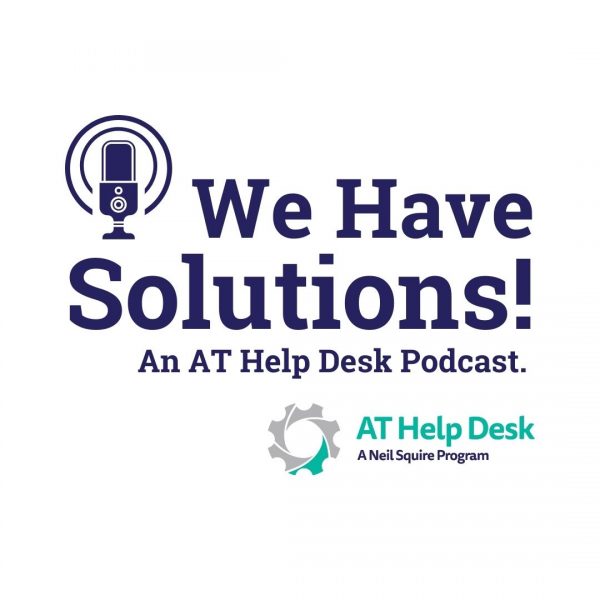New Orthotics Help Andrew Feel Much Less Pain at Work

Andrew works full-time at a grocery store in Victoria, where his tasks include pulling skids, loading milk trays, stocking fridges, as well as directing other employees. He has post-surgery right arm weakness, as well as right foot drop, making his job difficult at times.
His orthotics provider referred him to WorkBC Assistive Technology Services for funding.
“I received a right foot orthosis, that was much better than my previous one,” he shares.
New Hearing Aids Puts Cass on the Right Path in Her Job Search

Cass is a professional musician, who recently trained to become a technical animator in the film industry. She is currently looking for work as a technical animator, and she is also doing paid gigs as a musician.
“When the pandemic hit and folks were wearing masks, I realized that I had been relying on my ability to read lips to understand people. I was tested in August of 2023, and diagnosed with genetic hearing loss in the lower-to-mid frequencies. It affects my ability to distinguish speech and pitch,” she shares.
Lazarillo Accessible GPS

When you’re blind or low vision, finding your way around unassisted can be an intimidating and sometimes be a downright dangerous task. Some cities are built to be more accessibility-friendly than others, but even within relatively accessible cities, there are still bound to be areas that are difficult to navigate. And while we’ve looked at a few apps that are designed to assist low-vision users with tasks such as shopping, identifying faces, reading descriptions, etc., but we haven’t seen many apps that do a decent job of assisting with navigation (at least none that have good information about navigating within New Brunswick).
WorkBC Assistive Technology Services Helps Alfred Excel at His Job

Alfred works as a media producer for a supplement company, in charge of all aspects of media production for the company from the concept to filming to post-production. Working with a creative team, as well as liaising with a variety of stakeholders, communication is vital. However, Alfred has sensorineural hearing loss in both ears.
“The hearing loss impacts my ability to communicate with the members of my team,” he shares. “I would often struggle to hear discussions which directly affects my active participation in conversations at the workplace.”
WorkBC Assistive Technology Services Helps David Purchase Hearing Aids

David is a teacher on Vancouver Island, and he has hearing loss.
Through WorkBC Assistive Technology Services, he received funding for the hearing aids he needs for work.
“The assistance in buying my new hearing aids is a great gift I received, and I wish to express my gratitude,” he shares.
We Have Solutions! – Episode 25: Rabbit R-1, AT News, and Ten Tips for Adopting AT

On the latest episode, Nakia and Seaver will be looking at the new AI-powered pocket companion called the Rabbit R1. Then we talk a bit about what’s new in the world of AT, and finally, we list our top ten tips for adopting AT.
AT Help Desk 10th Anniversary: Josée’s Story
AT Help Desk celebrates 10 years of helping New Brunswickers with disabilities. Josée, who has learning disabilities, shares her story. With the support of AT Help Desk, she was able to successfully complete her studies.
*This video was originally produced in French, and has been dubbed into English.
New Hearing Aids Help Jim Communicate With His Clients

Jim is self-employed, working online and in-person with clients who require mediation, as well as psychological safety training. He has hearing loss.
“When I’m unable to hear my clients clearly it limits my ability to communicate in a role that is based entirely on effective communication,” he says. “If I miss or mishear what is being shared, this can have a serious outcome.”
Ten Tips for Adopting Assistive Technology

To celebrate the AT Help Desk’s 10th anniversary, we’ve compiled a list of our top ten tips for adopting assistive technology. If you’re someone who has recently been recommended assistive technology, or if you’ve been using AT for years but you’re wondering how to use it as effectively as possible, then this list is for you!
Ten Years of AT Help Desk by the Numbers
This year, our AT Help Desk program celebrates 10 years of service in New Brunswick. Here’s a breakdown of the impact:



